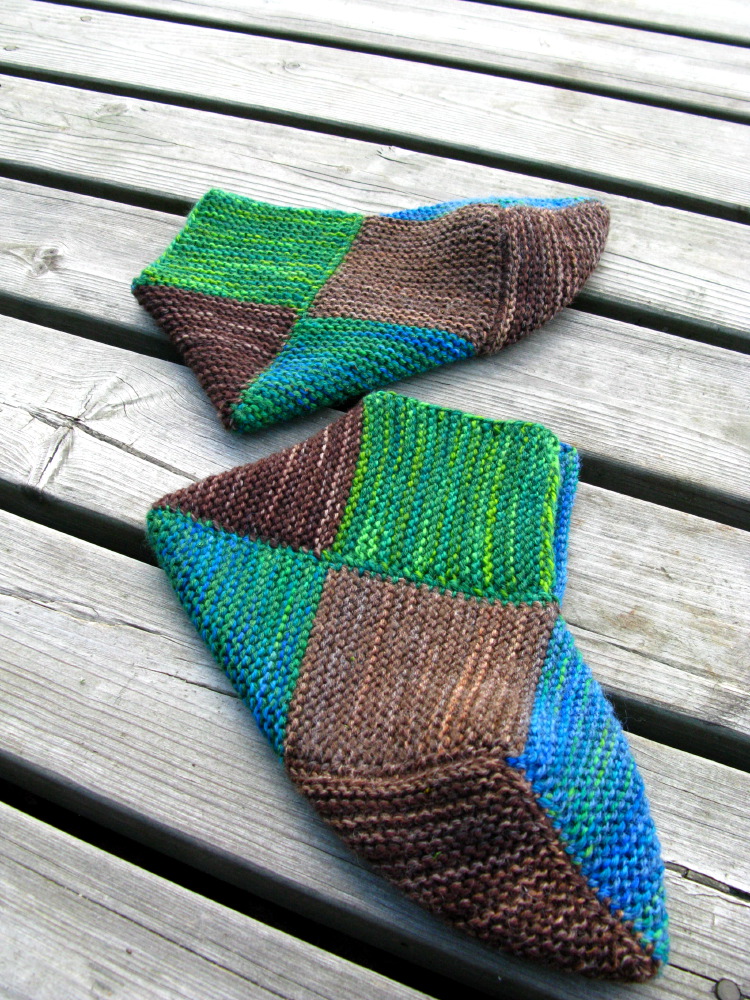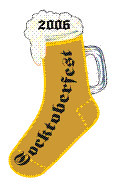16 squares
ETA: Thanks so much for your lovely comments! I've added some more information about the sizing of the slippers to the end of this post.
We are home again. But what a wonderful week we had at the cottage – this time the weather was perfect, so warm and lovely that most of our time there was spent in the lake. Onni practiced his swimming skills and did really well.

While my boy was resting from all the swimming and jumping*, I was busy knitting my holiday project. My mom has a pair of slippers like these (her sister has knit them for her), and after some unsuccessfull attempts to figure out the construction on my own, I went a-googling and found the pattern here.

8-square socks
Pattern source: Käspaikka
Size: 8,5 x 8,5 cm squares
Yarn: Sock yarn leftovers, held doubled
Needles: 3,5 mm
These were done in no time. The only downside is that 16 different coloured squares mean 32 yarn ends… But, if you're like me and don't mind a little seaming and end-weaving, this is a great little project. Interesting too, it was fun to see how the strip of squares started to look like a slipper when I began to sew it together.
The size of the finished slippers depends on how big you make your squares (the pattern gives you four sizes: from baby (vauvan) to mens (miesten)), and I chose to make my squares slightly bigger than in the womens' size. They fit pretty well, although the slippers are really stretchy and would probably fit smaller feet nicely too.

* This photo is staged. 6 year old boys, it seems, do not need any rest.
Ok, here's some more information about the sizing:
Sizes: Baby / Child / Woman / Man
Square sizes: 4 x 4 / 6 x 6 / 8 x 8 / 10 x 10 cm
The diagonal of the square: ~ 5,7 / 8,6 / 11,4 / 14,3 cm
The widht of the slipper: 1 x the diagonal of the square
The lenght of the slipper: 2 x the diagonal of the square
The slippers are really stretchy. If you decide calculate the needed size according to the actual length of your feet, you can subtract 15 - 20 % of your measurement.
I hope this makes sense!


<< Home